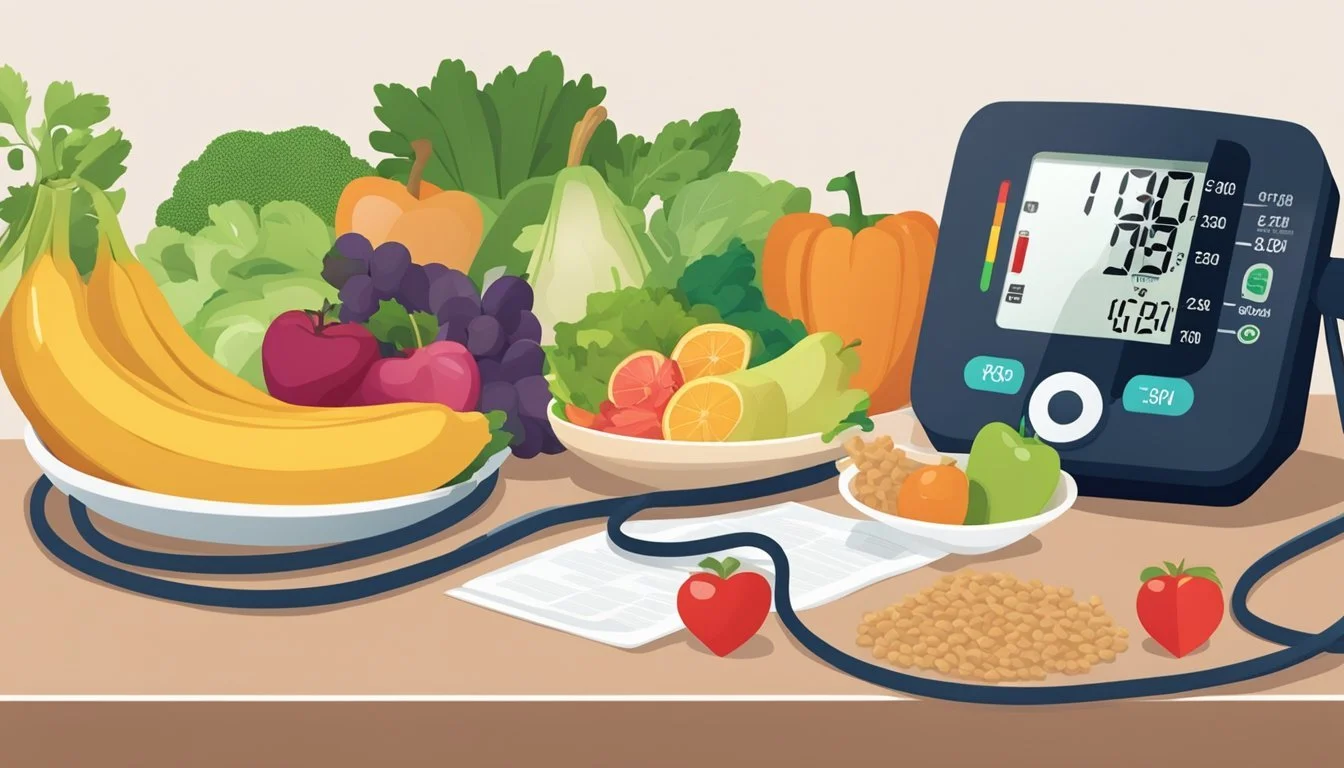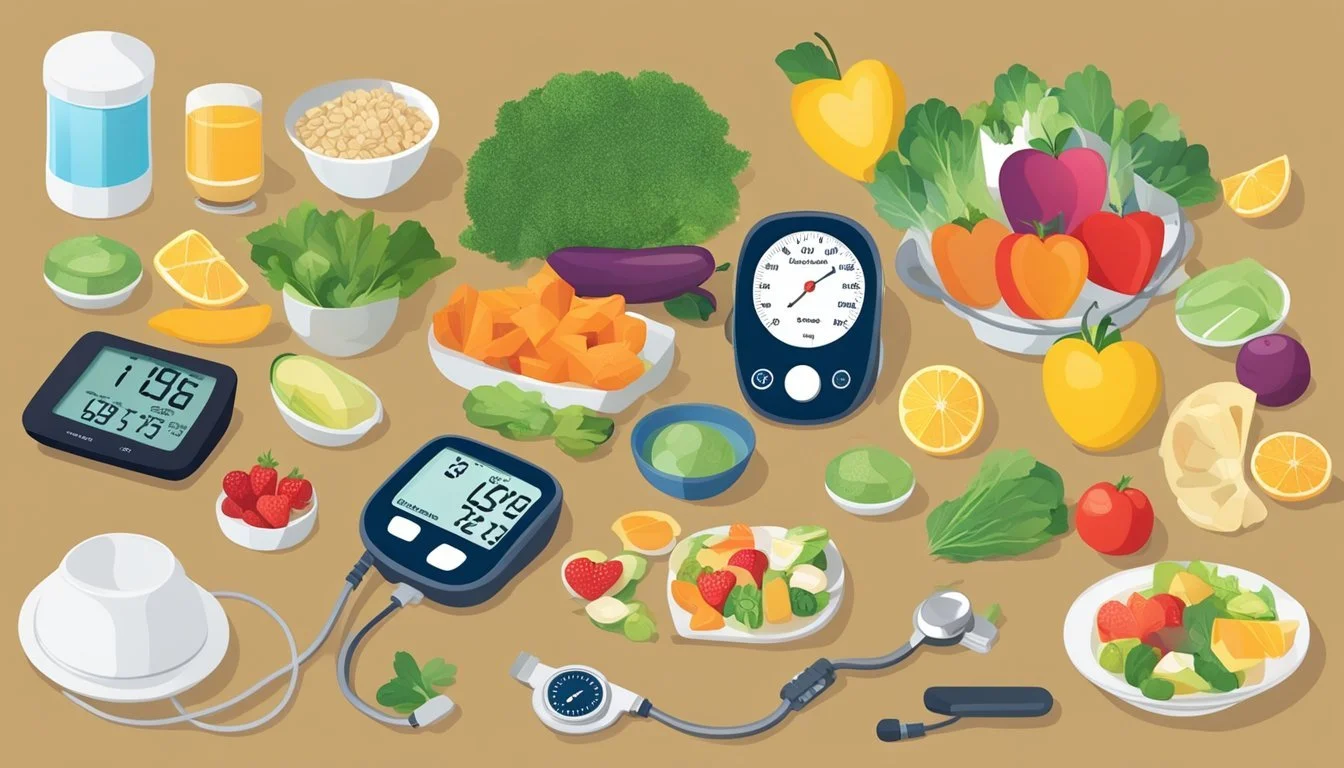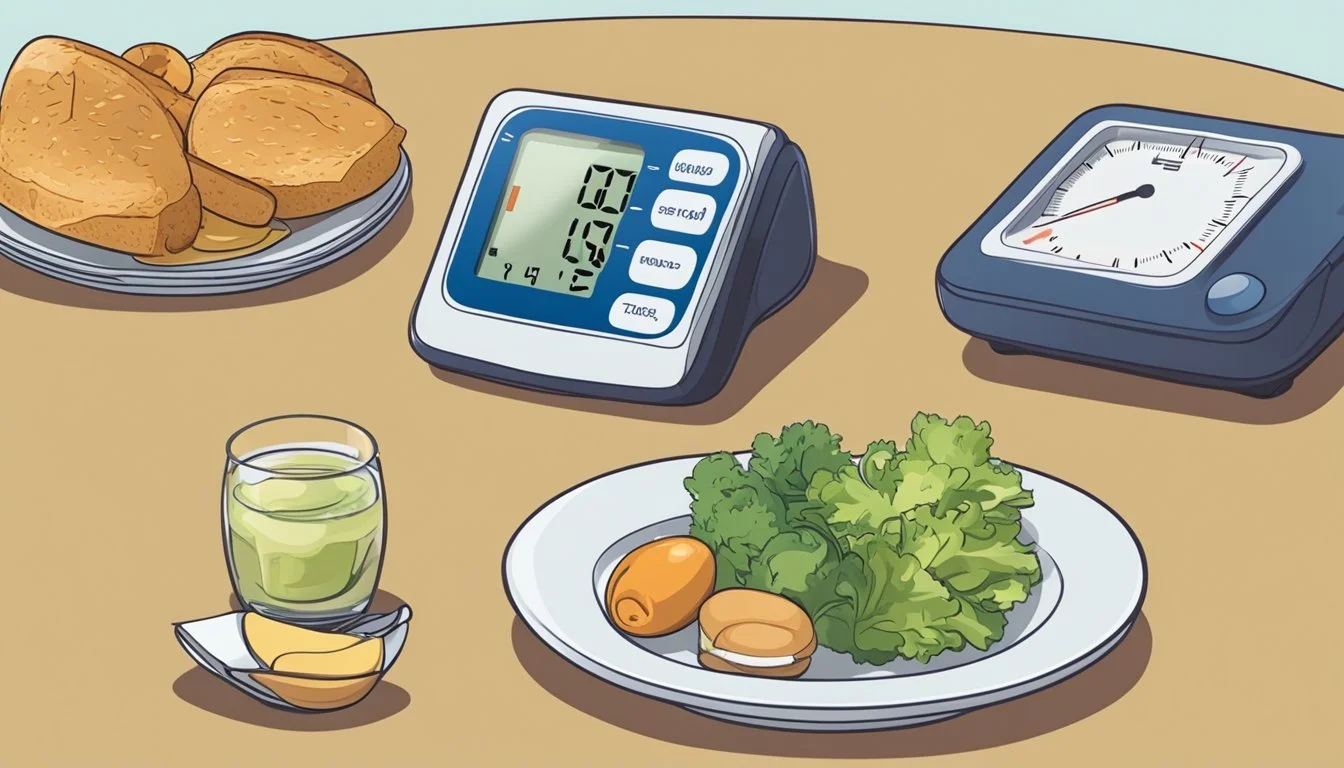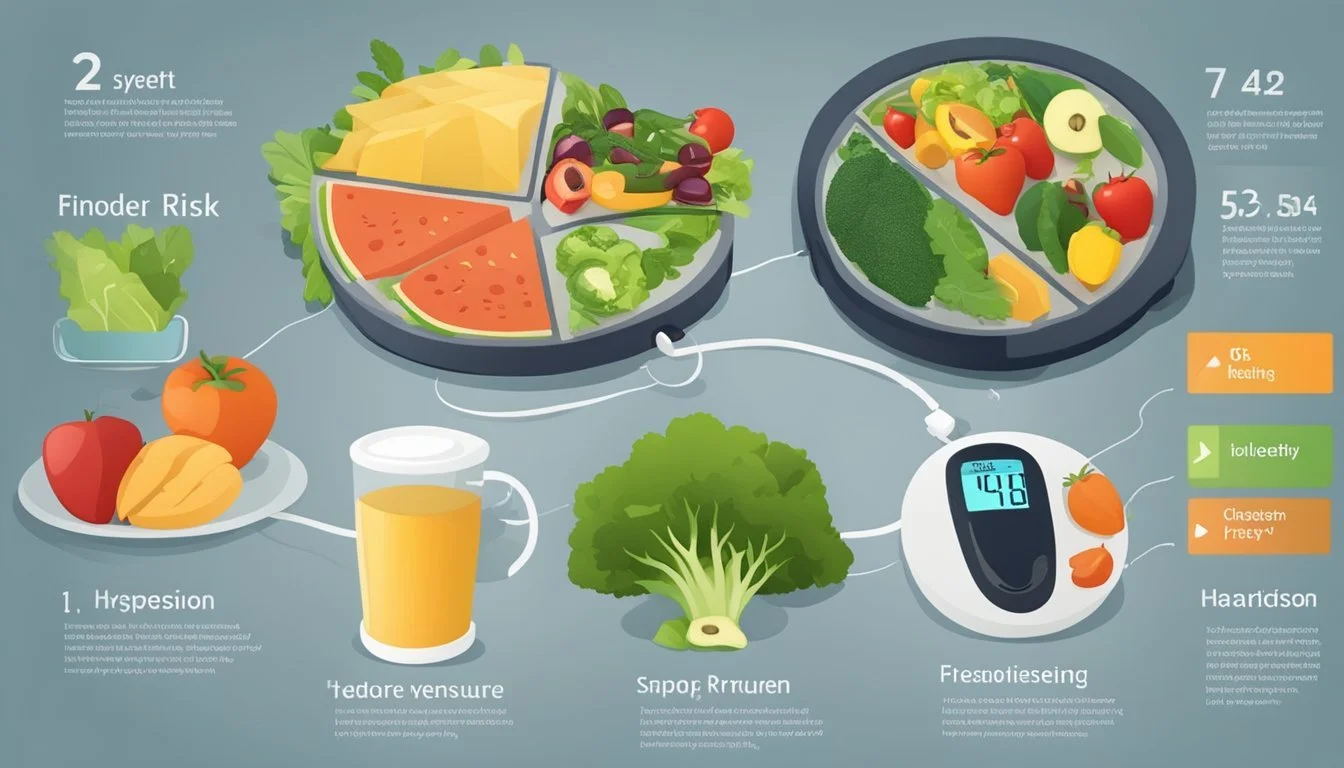How Does the TLC Diet Impact Hypertension Risk
Understanding the Connection
The TLC Diet, which stands for Therapeutic Lifestyle Changes, is specifically designed to support heart health and reduce the risk of hypertension, or high blood pressure. This diet emphasizes the reduction of saturated fat and cholesterol intake, aiming to lower the bad LDL cholesterol levels in the bloodstream which are known to contribute to the development of heart disease. By focusing on heart-healthy foods and nutrients, the TLC diet can be instrumental in managing blood pressure levels.
Incorporating the TLC diet into one’s lifestyle involves a selection of nutrient-dense foods such as fruits, vegetables, whole grains, lean proteins, and low-fat dairy. It also means limiting the consumption of red meat (What wine goes well with red meat?), sugar, and sodium—a dietary adjustment that is associated with lower blood pressure. With proper adherence, individuals following the TLC diet may also experience weight loss, further contributing to reduced hypertension risk.
Exercise and weight management are two additional pillars of the TLC approach, complementing the dietary component. Regular physical activity is recommended as part of the program, not only for weight control but also for its direct benefits on cardiovascular health and blood pressure reduction. When combined, these therapeutic lifestyle changes create a comprehensive strategy for improving heart health and mitigating the risk of hypertension.
Understanding Hypertension
Hypertension, or high blood pressure, is a chronic medical condition that significantly increases the risk of heart and cardiovascular diseases. Effective management of hypertension is crucial to mitigate these health risks.
Risk Factors for High Blood Pressure
The onset of hypertension can be attributed to a variety of risk factors. They fall under two categories: modifiable and non-modifiable factors.
Modifiable risk factors include:
Unhealthy diet (high in sodium, low in essential nutrients)
Physical inactivity
Consumption of tobacco and alcohol
High cholesterol levels which can lead to atherosclerosis
Non-modifiable risk factors comprise:
Age – the risk increases as one gets older
Genetics – a family history of hypertension
Race – certain races are at a higher risk than others
Understanding these factors is imperative as it helps tailor prevention and treatment strategies specific to an individual’s profile.
Effects of Hypertension on Health
Hypertension can have severe effects on the body, particularly on the cardiovascular system. It exerts extra pressure on the artery walls, leading to damage over time. The impact of high blood pressure encompasses:
Heart Disease: It is the leading cause of death globally. Hypertension can cause heart attacks by increasing the workload of the heart and contributing to the thickening of the arteries.
Cardiovascular Disease: Chronic hypertension can lead to conditions like stroke, heart failure, and aneurysm.
Organ Damage: Persistent high blood pressure can damage various organs, including kidneys, eyes, and the brain, apart from the heart.
Recognizing these impacts underscores the importance of managing blood pressure within healthy ranges to prevent long-term health complications.
Principles of the TLC Diet
The TLC (Therapeutic Lifestyle Changes) Diet is designed to help manage cholesterol levels and lower hypertension risk through a comprehensive approach focusing on specific dietary components, nutritional balance, and incorporation of various food groups.
Dietary Components
The diet primarily targets the reduction of saturated fat and dietary cholesterol. This is aimed at decreasing LDL (low-density lipoprotein) cholesterol:
Saturated Fat: Strive to limit to less than 7% of total daily calories.
Dietary Cholesterol: Limit to 200 milligrams per day.
Nutritional Balance
The TLC diet emphasizes a well-rounded intake of nutrients:
Fats: Majority of fats should be from mono- and polyunsaturated fats.
Carbohydrates: Encourages high intake from fruits, vegetables, and whole grains.
Protein: Adequate but not excessive protein intake is advised.
Recommended Food Groups
A focus on heart-healthy food groups helps balance the diet:
Fruits and Vegetables: 4-5 servings of each per day recommended.
Low-Fat: Dairy and meat choices should be low in fat.
Fiber: Aim for a dietary fiber intake of 20-30 grams per day.
By adhering to these principles, individuals can manage their cholesterol levels and reduce their hypertension risk effectively.
Nutritional Guidelines for Hypertension
Hypertension, or high blood pressure, is significantly influenced by dietary choices. Adherence to specific nutritional guidelines can mitigate this risk by focusing on key components of diet.
Managing Sodium Intake
Reducing sodium intake is critical in the management of hypertension. The average adult should strive to consume less than 2,300 milligrams of sodium per day, although further reductions to 1,500 milligrams can lead to even greater blood pressure control, especially in those with existing hypertension.
Recommended strategies:
Choose fresh or frozen produce over canned options.
Opt for low-sodium or no-salt-added varieties of foods.
Limit or avoid processed foods, which are often high in added sodium.
Incorporating Whole Grains
Whole grains are an essential component of a heart-healthy diet. They are a source of fiber and other nutrients that can help manage blood pressure and improve cardiovascular health.
Healthful whole grain choices include:
Brown rice
Quinoa
Oats
Barley
100% whole wheat bread
It is important to aim for at least three servings of whole grains daily for optimal benefits.
Selecting Healthier Fats
A focus on unsaturated fats, particularly those found in fish, nuts, seeds, and plant oils, should be a priority. These fats can improve blood cholesterol levels, which in turn can lower the risk of heart disease and hypertension.
Consume healthier fats by:
Including fatty fish like salmon or mackerel in meals twice a week.
Using olive oil for cooking or dressings.
Adding a small portion of nuts or seeds to daily meals.
Impact of TLC Diet on Hypertension
The Therapeutic Lifestyle Changes (TLC) Diet not only targets cholesterol levels but also contributes to blood pressure management, influencing hypertension risk.
Effects on Blood Pressure
The TLC Diet emphasizes low-fat dairy products and a reduction in saturated fats. A diet low in saturated fats can alleviate pressure on arteries, potentially decreasing systolic and diastolic blood pressure. By incorporating lean meats and ample vegetables, the diet avoids excessive sodium intake, which is closely linked with elevated blood pressure levels.
Influence on LDL Cholesterol Levels
Dietary fiber, particularly from whole grains, and heart-healthy components of the TLC Diet are designed to address LDL cholesterol. Soluble fiber found in oats and barley aids in binding cholesterol in the digestive system, promoting its excretion and subsequently reducing LDL levels. The restriction of high-cholesterol and high-saturated fat foods further helps to keep LDL cholesterol in check.
Long-Turn Health Outcomes
Adhering to the principles of the TLC Diet can translate into long-term health benefits concerning hypertension. Regular consumption of fiber-rich foods and lean proteins can lead to sustainable weight management and cardiovascular health, contributing to a consistent mitigation of hypertension risks. Commitment to this diet, paired with physical activity, supports maintaining a healthy blood pressure over the long term.
Making the TLC Diet Work
To effectively reduce hypertension risk through the Therapeutic Lifestyle Changes (TLC) diet, individuals must focus on meal planning, cooking techniques, and broader lifestyle considerations. This approach promotes heart health by managing saturated fat intake and encourages incorporating exercise for overall well-being.
Meal Planning
For those following the TLC diet, meal planning centers around a balance of nutrients conducive to lowering cholesterol and managing blood pressure. Individuals should prioritize:
Fruits and Vegetables: Aim for at least 4-5 servings of fruits and vegetables each day.
Whole Grains: Include at least 6 servings of whole-grain foods like oats, barley, and brown rice.
Lean Proteins: Opt for skinless poultry, fish, and lean cuts of meat, limiting intake to 5 ounces per day.
Fat-Free or Low-Fat Dairy: Choose fat-free or 1% milk, yogurt, and other dairy products to reduce saturated fat consumption.
Meals should be designed to be low in saturated fats and rich in fiber, which helps manage weight and cholesterol levels.
Cooking and Food Preparation
Cooking methods and food preparation significantly impact the nutritional profile of meals on the TLC diet. Suggestions include:
Healthy Cooking Techniques: Bake, grill, steam, or broil rather than frying to minimize added fats.
Use Oil Sparingly: When oil is necessary, opt for olive or canola oil, rich in monounsaturated fats.
Finally, it's important to read food labels to avoid hidden saturated fats and cholesterol in packaged foods.
Lifestyle Considerations
Beyond diet, a comprehensive approach to lowering hypertension includes:
Calorie Management: For weight loss, men should aim for 1,200-1,600 calories per day, while women should target 1,000-1,200 calories.
Regular Exercise: Incorporate at least 30 minutes of moderate-intensity exercise, such as brisk walking, most days of the week.
Together, these dietary and lifestyle efforts work synergistically to manage hypertension risk effectively.
Complications and Considerations
When integrating the Therapeutic Lifestyle Changes (TLC) diet into a hypertension management plan, patients need to consider pre-existing health conditions and practical challenges. The diet should be adapted to each individual's unique health profile, and potential hurdles in maintaining dietary changes should be anticipated and addressed.
Adjustments for Other Health Conditions
For individuals with diabetes, special modifications to the TLC diet may be required. This can include careful monitoring of carbohydrate intake and balancing blood sugar levels, as consistent with guidance from a registered dietitian. Additionally, if patients are on medication for other conditions, they should consult with healthcare professionals:
To ensure that dietary changes do not interfere with medications.
To adjust medication dosages if weight loss occurs, which can affect how certain drugs work.
Potential Challenges and Solutions
Adhering to the TLC diet may present challenges, such as:
Accessibility: Finding recommended foods that fit the TLC criteria.
Cost: Budgeting for potentially higher-priced items like fresh produce or lean proteins.
Dietary Habits: Adjusting to new portion sizes and meal composition.
For each of these challenges, solutions may include:
Planning: Preparing shopping lists and meal plans that emphasize TLC-friendly foods.
Education: Seeking guidance from a registered dietitian to understand affordable options.
Support: Joining a support group for accountability and motivation.
Consistency is critical for the TLC diet to effectively impact hypertension risk, and addressing these considerations can help patients maintain the diet long-term.
Comparing Diets for Hypertension
Diet remains a pivotal element in managing and potentially reducing the risk of hypertension. Two dietary approaches often compared for their impact on blood pressure are the Mediterranean Diet and the Therapeutic Lifestyle Changes (TLC) Diet.
Mediterranean Diet vs. TLC
The Mediterranean Diet encourages consumption of fruits, vegetables, whole grains, and healthy fats, particularly olive oil. Fish, which is rich in omega-3 fatty acids, is preferred over red meat. Many studies suggest this diet can lead to lower incidences of hypertension due to its balance of nutrients that support heart health.
In contrast, the TLC Diet, which stands for Therapeutic Lifestyle Changes, is geared specifically toward lowering cholesterol and recommends a fiber-rich diet with limited intake of animal products. It emphasizes the importance of choosing leaner cuts of meat and consuming more skinless poultry and fish.
Comparison Mediterranean Diet TLC Diet Primary Focus Heart health with emphasis on omega-3 fatty acids and healthy fats Lowering cholesterol through dietary fiber and limited fat intake Meat Consumption Fish preferred, limited red meat Lean meats, with a push towards more poultry and fish Dietary Fiber Present, but not as highly emphasized High-fiber foods such as oats and barley are recommended
Other Heart-Healthy Diet Plans
Apart from the Mediterranean and TLC diets, the DASH Diet (Dietary Approaches to Stop Hypertension) is another plan extensively researched for hypertension. This diet focuses on reducing sodium intake while increasing consumption of potassium, calcium, and magnesium-rich foods that are known to help lower blood pressure.
Both the DASH and TLC diets have been recognized for their effectiveness in promoting heart health and managing weight, though their strategies differ slightly, with the former placing more emphasis on mineral balance and the latter prioritizing cholesterol reduction.
Diet Emphasis Goal DASH Diet Low sodium, rich in potassium, calcium, and magnesium Lower blood pressure TLC Diet Low in saturated fat, high in soluble fiber Lower cholesterol, manage weight
Each diet has its own merits and can contribute to a healthier cardiovascular system when followed correctly. Health practitioners typically recommend these diets not only for managing existing hypertension but also for its potential in preventing the condition.
Expert and Institutional Recommendations
In addressing the impact of the Therapeutic Lifestyle Changes (TLC) diet on hypertension risk, a wealth of expert insights and institutional guidelines provide a foundation for its advocacy. Research and established health organizations articulate the benefits of this diet in mitigating the risk of hypertension.
Research and Studies
Multiple studies support the effectiveness of the TLC diet in lowering blood pressure, which is pivotal for reducing hypertension risk. Specific dietary components, such as reduced intake of saturated fats and increased consumption of fiber-rich foods, are documented to have direct beneficial effects on cardiovascular health.
Guidelines from Health Organizations
Health organizations, including the National Institutes of Health (NIH), have formalized recommendations around the TLC diet. Here is a brief overview of these guidelines:
National Institutes of Health: Advises the TLC diet to improve cholesterol levels and lower the risk of heart disease and hypertension.
Healthcare Providers: They often reflect institutional guidelines, advising patients on individualized dietary plans, including the TLC diet, as a part of comprehensive care.
Health experts consistently rank the TLC among the best diets for heart health due to its evidence-based design focusing on overall nutritional quality and its adaptability by individuals in consultation with their healthcare providers.
Conclusion
The Therapeutic Lifestyle Changes (TLC) diet significantly influences hypertension risk. It prescribes a dietary pattern that emphasizes limiting dietary cholesterol and total fat, particularly saturated and trans fats. Individuals are recommended to consume no more than 200 milligrams of dietary cholesterol per day. By focusing on these guidelines, patients often experience a reduction in blood pressure levels, which correlates with a decreased risk of hypertension.
Sustainable health practices such as the ones promoted by the TLC diet, which includes increasing the intake of fruits, vegetables, lean proteins, and high-fiber foods, not only aid in hypertension management but also support overall cardiovascular health. The TLC diet's approach to gradual and maintainable lifestyle modifications ensures that individuals can adapt to these changes long-term without feeling overwhelmed.
Consuming nutrient-rich foods that contribute to better heart health forms the cornerstone of the TLC diet. Individuals are encouraged to reduce the amount of meat they consume to 5 ounces or less per day and replace it with plant-based alternatives high in fiber and plant sterols, providing additional support for blood pressure control.
The diet's impact on quality of life is another crucial aspect. By reducing hypertension risk and contributing to weight management, individuals often enjoy more vitality and lower health risks. This contributes to an enhanced sense of well-being and day-to-day functional capacity.
In conclusion, the TLC diet presents a structured and scientifically backed approach for managing hypertension risk factors through comprehensive dietary adjustments, translating into long-term health benefits and improved quality of life for those who adhere to its recommendations.






